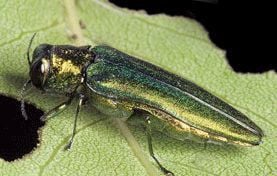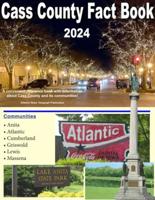MASSENA – Several hundred ash trees have been removed at the Outdoor Classroom, Cass County Conservation Director Micah Lee told the Cass County Board of Supervisors last week, and recently Cass County received a grant for more trees to replace them. Earlier this year, the emerald ash borer, a green beetle that is native to Asia and feeds on ash trees which can kill or weaken them, was found in the outdoor classroom, which is located south of Massena.
Lee said the new trees will likely be planted next May since the area forester recommended waiting because of dry conditions the area is experiencing now. He said less trees will be planted there to allow for more parking space, especially for buses.
“We’re not going to plant as many trees that were in there before,” Lee said. “We’re going to take the north portion of it, and make it a parking area. Make it big enough for buses. It’s not easy, especially when Atlantic sixth graders come down. Their big buses struggle to get in and out of there.”
Officials with the Iowa Department of Agriculture and Land Stewardship said the beetle is a “significant threat to all species of ash trees,’ and the beetle “tunnels just beneath the bark in the vascular tissue, disrupting the transport of water and nutrients. Infested trees usually die within two to four years.”
Signs that a tree has been infected include “canopy thinning, leafy sprouts shooting from the trunk or main branches, serpentine (“S”-shaped) galleries under the bark, bark splitting, woodpecker damage and 1/8 inch D-shaped exit holes.”
Officials say it is up to landowners to determine what to do if they have ash trees on their property if they are within 15 miles of a known infestation Options vary from waiting to see what happens with the tree, removing the trees and replacing them with other kinds, or using preventive insecticides. Insecticides are best for ash trees that are “actively growing,” and the best time for treatment is from mid-April to mid-May.














